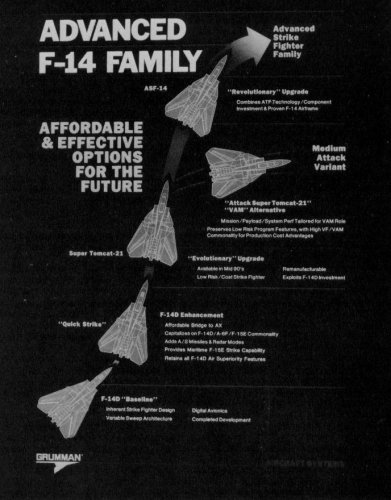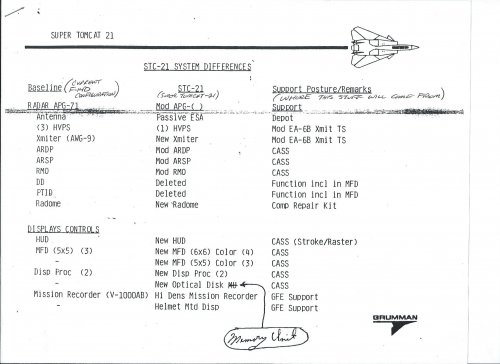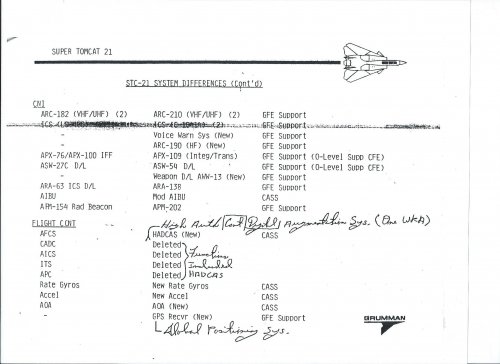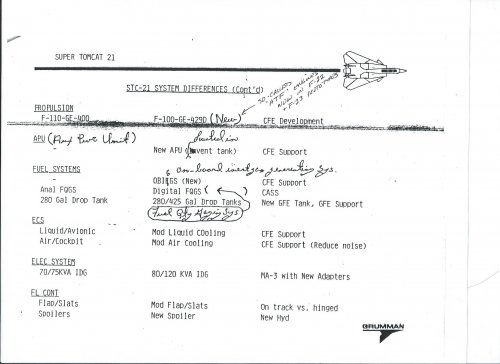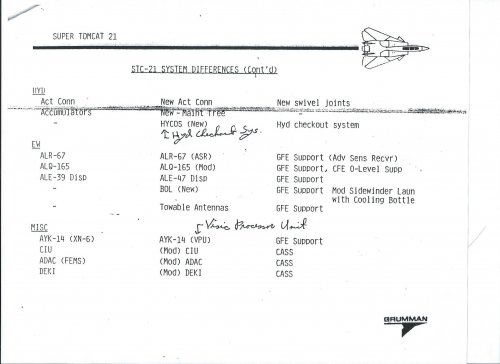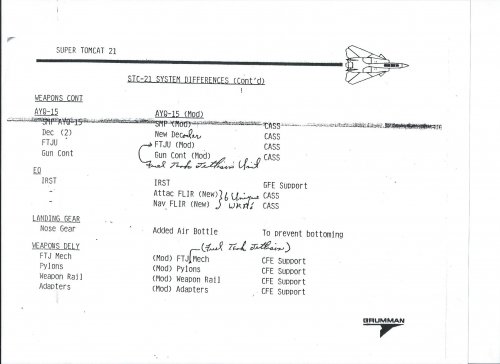Colonial-Marine said:
F-14D said:
This was redone in the D, and a number of reliability and maintainability features originally intended to be in the production version of the F-14 (the original B, the A was not meant to go into production) were incorporated
Now I've always read the F-14A was indeed intended for production, but only some 70 aircraft were planned to be built before production switched over to the definite F-14B with the F401 engines. Those F-14As would be upgraded rather quickly. What are these reliability and maintainability related features you refer to?
Regarding the costs of the F-14D, were the bulk of the aircraft expected to be new production or rebuilt F-14As? Were they rebuilt to a "0 hour" standard, or was it less extensive than that?
Sorry for the delay, been away (again) and didn't stumble across your question until now.
The intention was that there would be a maximum of 69 but maybe as little as 13 F-14As built. The original plan was that these would be used for most of the flight testing, initial workup and training. This would serve to get the aircraft into service faster. Bs would have had some changes in wiring and hydraulics, more optimized subcomponents, etc. and probably an APU in the starboard nacelle. When the B was abandoned, it was proposed to incorporate some of those features into the version that was being built. However the NAVAIR and ASO bureaucracy looked at it as "Those are F-14B features and we are not building the F-14B". Also, with the Tomcat program in serious trouble, mostly not of its own making, a number of subcontractors that were expected to be producing the upgraded systems informed the Navy that given the perilous state of the program they were not willing to invest the money to stand up capability to produce things for a program that may never fly. So, the Navy decided to stick with an essentially unchanged F-14A for many, many years.
Regarding F-14D, the planned fleet size would be 527. Originally, they were to be almost totally new construction with an expected airframe life of 25-30 years/ 9,000 hours. However, it was expected at this time that the NATF would be arriving in the next decade and so there would not be a need for F-14Ds that would last that long, so the focus was changed towards a percentage of rebuilds which would be cheaper, but would have a shorter, but acceptable for the purpose, airframe life. In 1986 the plan was 304 new and 223 re-manufactured As and A s. This later became 127 new and 400 rebuilds. The proportions bounced around a bit until in 1989 SECDEF Cheney announced he was killing all new production F-14Ds. By then it became apparent that the NATF was going to be further off in time and cost a lot more than what the Navy originally thought. So they requested that the money planned for re-manufactured F14s in FY 91 and 92 instead be used for new builds, figuring they could get two new, which would last longer, for the cost of three rebuilds.
So as not to embarrass the SECDEF, who was popular and more importantly an ex-Congressman, Congress authorized the production of another year's production of new F-14Ds on the condition that Grumman agree not to lobby for more new production. The SECNAV, though, wanted further new production (132 to be exact) because of NATF delays. At this point, Cheney came in and said that not only would there be no new production beyond what was already contracted, but the re-manufacture program was terminated,
including those already in production.
This had the effect of destroying the 18 Tomcats that were on the re-manufacture production line. Congress got upset and restored fund to complete them and ordered the program continued for another year. At this point DoD announced that the Navy would "choose" to instead order the development of what would become the Super Hornet and the rest is disappointing history

